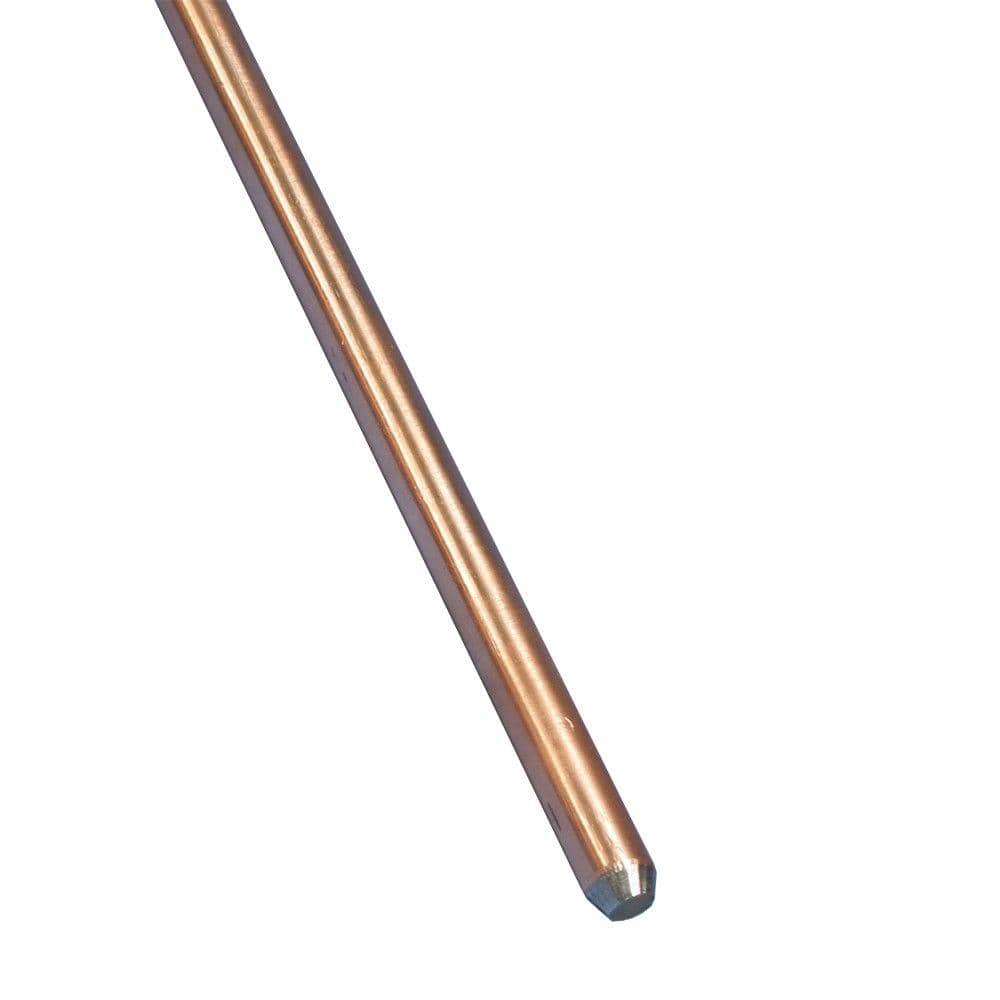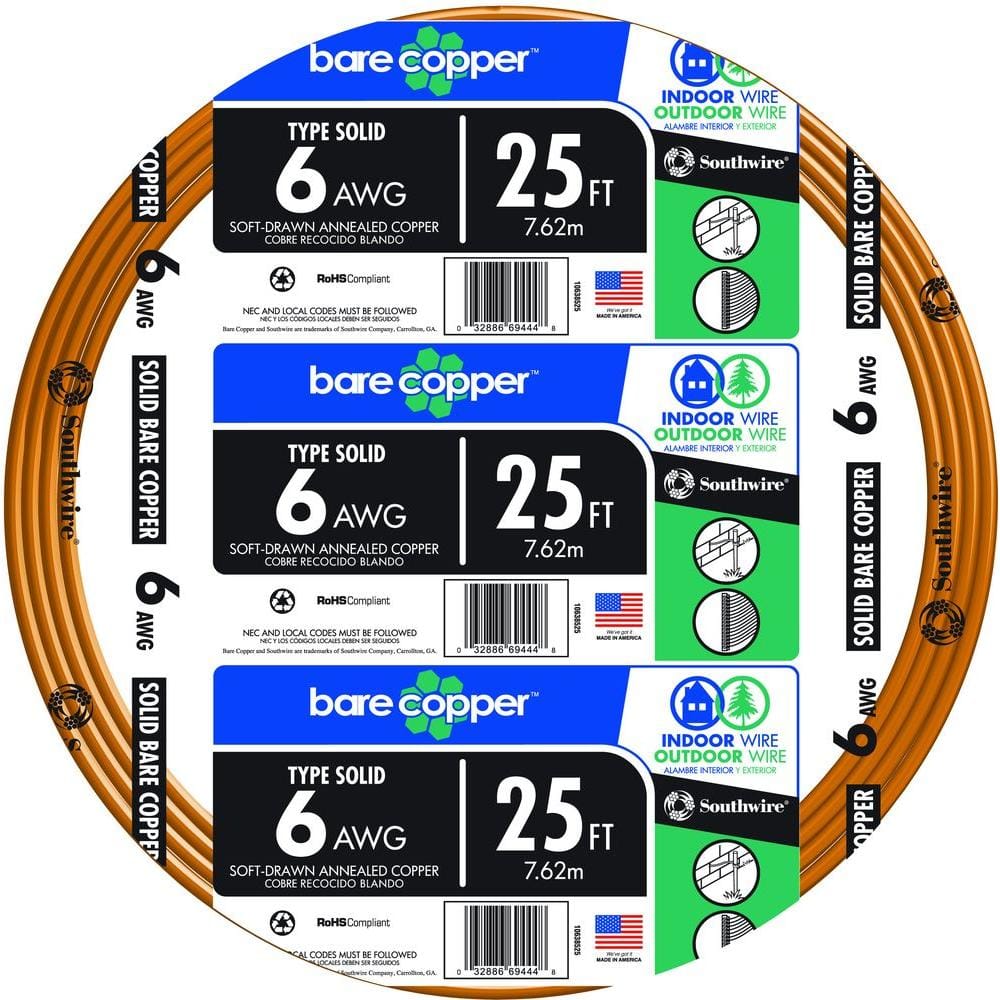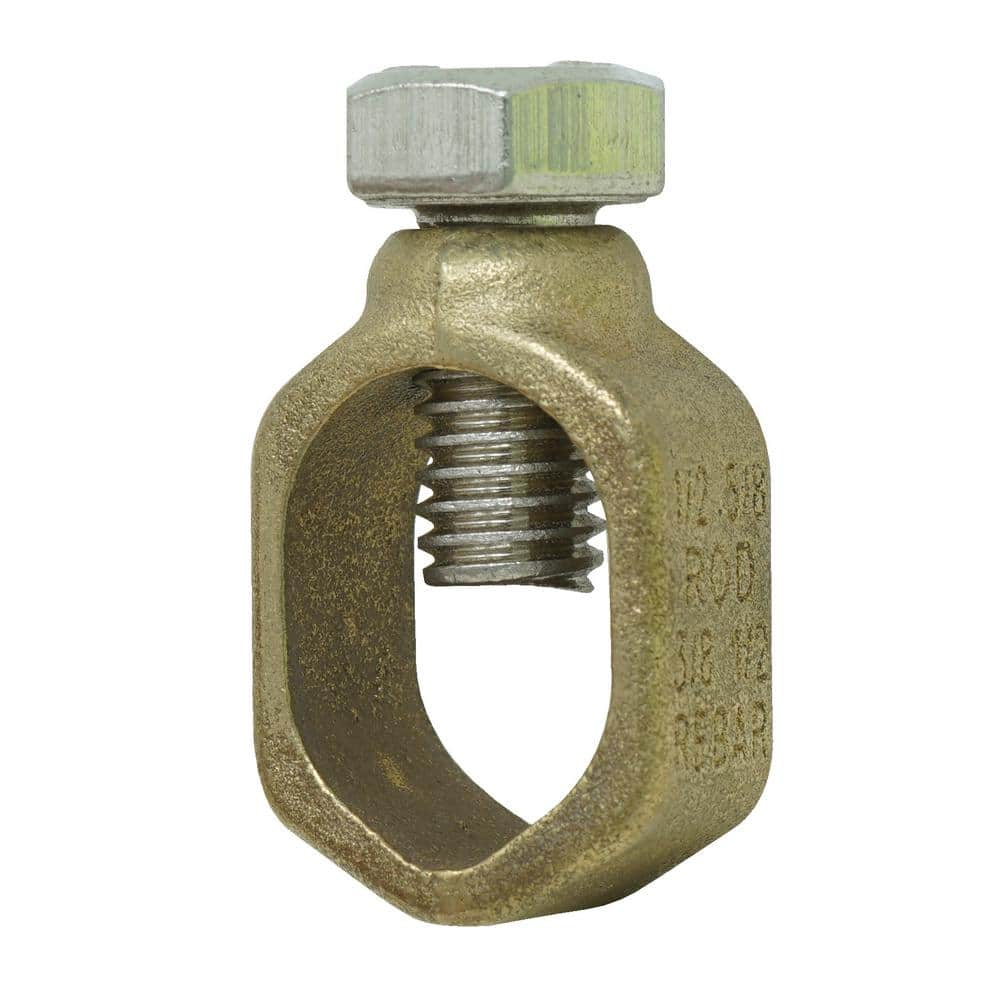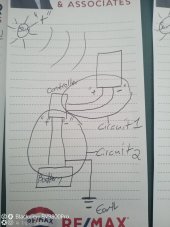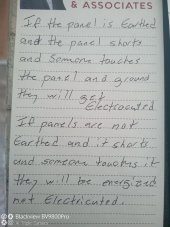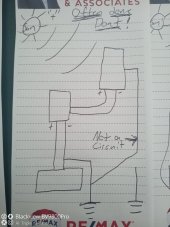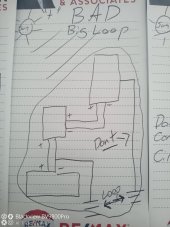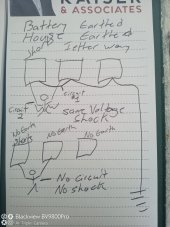A single strand of copper, #6 or larger that is not joined to another strand.What is the definition of "an unbroken grounding conductor"?
In other words, the wire must be run from the panel, through both clamps to the rods, and connected to any metal pipes in the structure. It cannot be several sections of wire joined by wire connectors, it must be an unbroken wire continuous from bussbar to the last clamp.




